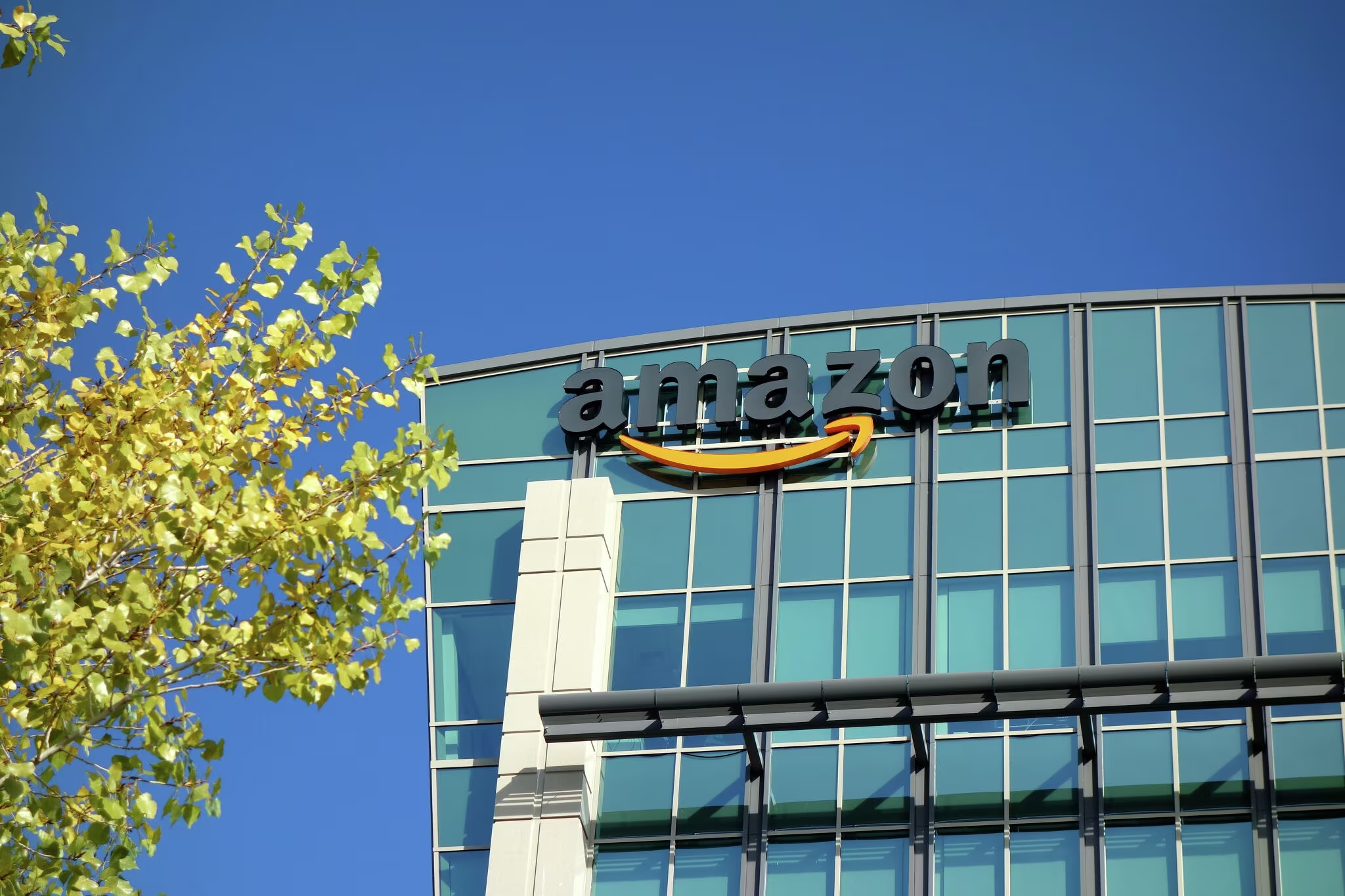Amazon Confirms Major Job Cuts in California, Citing Strategic Shift to Generative AI
On October 28, 2025, Amazon executed a sweeping round of corporate layoffs that heavily impacted hundreds of workers in its California offices, particularly in the Bay Area city of Sunnyvale. This latest reduction in force, following multiple previous cycles, raised immediate questions about the company’s stability, especially given its strong financial performance in key sectors.
The rationale behind these painful cuts was swiftly addressed by a top executive, confirming that the move was not a sign of financial distress but rather a calculated, strategic realignment of resources toward the company’s most critical future growth area: Generative AI (GenAI).
The Executive Rationale: Why Cut Jobs During Growth?
The explanation for the timing and scale of the layoffs came from Lisa Utzschneider, Amazon’s Chief Marketing Officer (CMO) for Worldwide Prime Video and Amazon Studios. Utzschneider acknowledged the difficult nature of the decision, recognizing the paradox of cutting staff while the company continues to expand its market dominance.
She directly addressed the skepticism surrounding the move, stating that many might question the necessity of such large-scale reductions at a time when Amazon is thriving.
“Some may ask why [these layoffs are happening now],” Utzschneider noted, emphasizing that the decision was driven by long-term strategic necessity rather than short-term cost savings. The core objective, she explained, was to reallocate resources—both financial capital and high-caliber talent—away from legacy or lower-priority divisions and into the burgeoning field of GenAI.
This explanation underscores a fundamental shift in Amazon’s corporate priorities, mirroring a broader trend across the entire technology sector where companies are aggressively consolidating efforts to win the expensive and talent-intensive race for AI supremacy.

The Strategic Pivot: Funding the Generative AI Race
Amazon, like its competitors Google and Microsoft, views GenAI as the next technological frontier that will redefine everything from cloud computing (AWS) to e-commerce and digital entertainment (Prime Video). Developing and deploying these advanced models requires massive investment in infrastructure, specialized hardware (like custom chips), and elite engineering talent.
Utzschneider’s use of the term “reallocate resources” is corporate language for a strategic trade-off. It implies that the capital and personnel previously dedicated to projects deemed non-essential, redundant, or low-return must now be redirected to fund the high-cost, high-risk, but potentially high-reward GenAI initiatives.
Implications of Resource Reallocation
This strategic pivot has several key implications for Amazon’s organizational structure:
- Focus on Core Competencies: Divisions that do not directly support AWS, e-commerce optimization, or GenAI development are likely candidates for reduction.
- Talent Migration: Amazon is actively seeking to move high-performing employees from affected areas into GenAI roles, while eliminating positions that require skills less critical to the AI future.
- Cost of AI: The sheer expense of training large language models (LLMs) and building the necessary computing clusters necessitates significant internal cost-cutting elsewhere to maintain profitability targets.
This is not simply about reducing headcount; it is about reshaping the workforce to be AI-centric, ensuring that every dollar spent contributes to winning the next technological cycle.
California’s Disproportionate Impact
The Bay Area, including Sunnyvale, has historically been a hub for Amazon’s corporate and technology development teams, making it particularly vulnerable to these strategic realignments. California’s high concentration of tech headquarters means that when major companies like Amazon restructure, the local economy and workforce feel the effects immediately and intensely.
Why California Feels the Brunt:
- Concentration of Corporate Roles: The layoffs targeted corporate, engineering, and administrative functions, which are heavily centralized in high-cost-of-living areas like the Bay Area.
- High Operating Costs: While not the primary driver, the high cost of maintaining large offices and paying top-tier salaries in California makes these locations prime targets for efficiency cuts when resources must be redirected.
- Tech Sector Interdependence: Layoffs at one major tech player often signal instability or strategic shifts that ripple through the entire regional tech ecosystem, affecting contractors, suppliers, and ancillary businesses.
The hundreds of jobs lost in Sunnyvale represent not just individual career disruptions but a significant economic shock to a region already grappling with the volatility of the modern tech industry.

Broader Context: The Tech Industry’s AI Obsession
Amazon’s decision is part of a larger, post-pandemic trend where tech giants are moving away from the rapid, often unsustainable hiring spree of 2020-2022. The current environment prioritizes efficiency and strategic focus, with AI serving as the central organizing principle for future investment.
Companies like Meta, Google, and Microsoft have all undergone similar, painful restructuring processes over the past 18 to 24 months, explicitly citing the need to streamline operations and invest heavily in AI.
This trend suggests that the era of broad, experimental growth across multiple non-core business lines is over. The new mandate is hyper-focus on profitability and technological leadership in one specific, transformative area: artificial intelligence.
Key Takeaways for the Workforce
For employees in the tech sector, this layoff round reinforces several critical realities:
- AI Skills are Paramount: Roles directly related to GenAI development, machine learning engineering, and data science are highly secure and in high demand.
- Legacy Roles are Vulnerable: Positions supporting older technologies, experimental projects, or non-core business units face increased scrutiny and risk of elimination.
- Efficiency Over Expansion: Corporate decisions will continue to favor lean, highly efficient teams over large, sprawling departments, regardless of overall company revenue.
Utzschneider’s candid explanation provides transparency regarding Amazon’s priorities, making it clear that the company is willing to make difficult, large-scale personnel adjustments to secure its competitive edge in the AI future.
Conclusion: A Clear Signal of Future Direction
Amazon’s October 2025 layoffs in California serve as a powerful signal to the market and the workforce: the company is fully committed to the Generative AI revolution. By explicitly linking the job cuts to the need for resource reallocation, Amazon is communicating that the cost of developing world-class AI models is so high that it necessitates sacrificing jobs in otherwise healthy divisions.
For those affected in Sunnyvale and across the Bay Area, the immediate impact is severe. However, the corporate messaging confirms that these are strategic sacrifices made to fuel the company’s next major growth engine, reinforcing the idea that in 2025, the technology sector’s primary focus—and its primary source of volatility—remains the intense, costly race for AI dominance.
What’s Next
Industry observers anticipate that Amazon will continue to aggressively hire in specialized AI fields, even as it cuts jobs in other areas. The focus will now shift to how quickly Amazon can translate this resource pivot into tangible GenAI products and services that challenge the current market leaders. Further restructuring and internal talent shifts are highly likely as the company executes its mandate to become a leader in the AI-first economy.
Original author: Stephen Council
Originally published: October 30, 2025
Editorial note: Our team reviewed and enhanced this coverage with AI-assisted tools and human editing to add helpful context while preserving verified facts and quotations from the original source.
We encourage you to consult the publisher above for the complete report and to reach out if you spot inaccuracies or compliance concerns.

